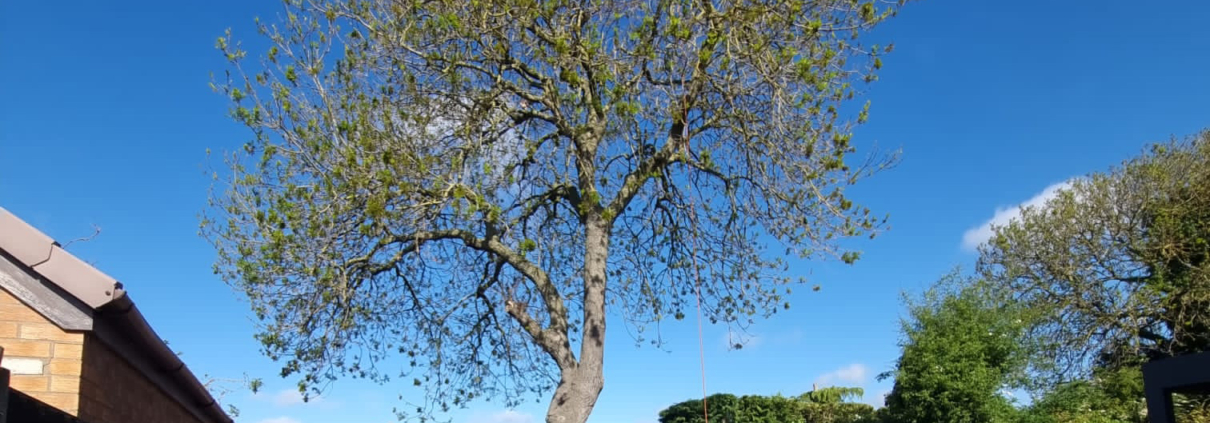What’s the difference between tree pollarding and crown reduction?
Today, we are addressing a common query among our customers: What’s the difference between tree pollarding and crown reduction? These two pruning techniques may sound similar, but they serve distinct purposes in maintaining the health and aesthetics of a tree. Let’s shed some light on when and why each method could be undertaken.
Understanding tree pollarding
Tree pollarding is a specific pruning technique that involves the removal of all branches and stems of a tree back to the trunk. This severe form of pruning results in a compact head of branches, often referred to as a ‘Pollard head’. We would typically carry this out above the ground depending on the size of the tree.
- Aesthetic control: Wecmay carry out tree pollarding to control the size and shape of a tree. This can be especially useful in urban areas with limited space.
- Long term maintenance: When carried out correctly, pollarding can extend the lifespan of certain tree species. It encourages the growth of a dense network of young shoots, which can reduce the risk of disease and decay.
- Urban adaptation: We also may choose pollarding as an option to manage a tree’s size and shape within the confines of urban environments, thus preventing interference with power lines and buildings.
Understanding crown reduction
Crown reduction on the other hand, is a less radical approach to tree pruning. This technique involves selectively reducing the height and spread of a tree’s crown while maintaining its natural shape.
- Canopy reduction: Crown reduction focuses on removing specific branches to decrease the overall size of a tree’s canopy. We often employ this method to address issues such as crowding, light obstruction or proximity to structures
- Health improvement: Crown reduction can enhance a tree’s overall health by eliminating dead or diseased branches. This allows for better air circulation and sunlight penetration, promoting a healthier, more resilient tree
- Aesthetic appeal: After discussion with a customer, we commonly choose this approach for its ability to maintain the natural form of a tree while addressing issues related to size and structure
Choosing the right technique
The decision between tree pollarding and crown reduction depends on various factors, including the tree species, its location and the aims and objectives of the work. Consulting with a professional and experienced arborist, such as our team at Simpson Arboriculture, is crucial. We can assess your tree and suggest appropriate action which will both achieve the customers’ aims and support the health and longevity of the tree. We specialise in carrying out tree work to ‘British Standard BS3998: 2010 Tree Work- recommendations’.
Conclusion
In the world of arboriculture, understanding the distinctions between tree pollarding and crown reduction is key to making informed decisions about the maintenance of your trees. Whether you’re looking to control size, improve aesthetics or enhance the health of your trees, Simpson Arboriculture is here to help! We can provide expert advice and professional services tailored to meet the needs of your trees. You can get in touch with us in the office or via our by submitting an enquiry on our website.






